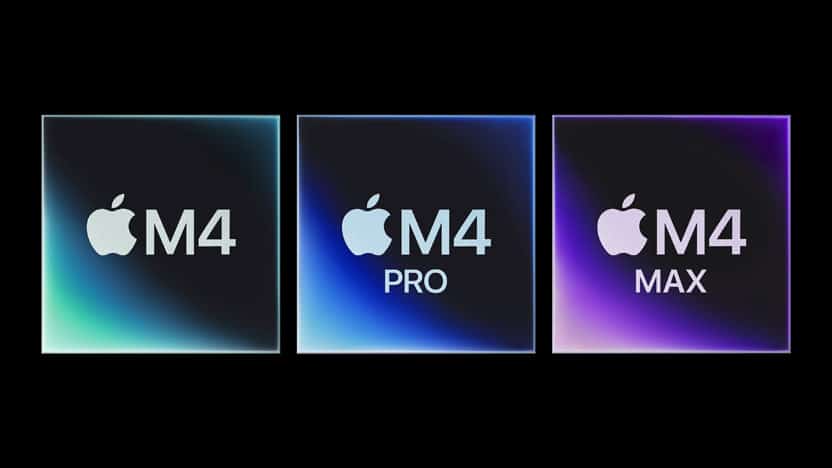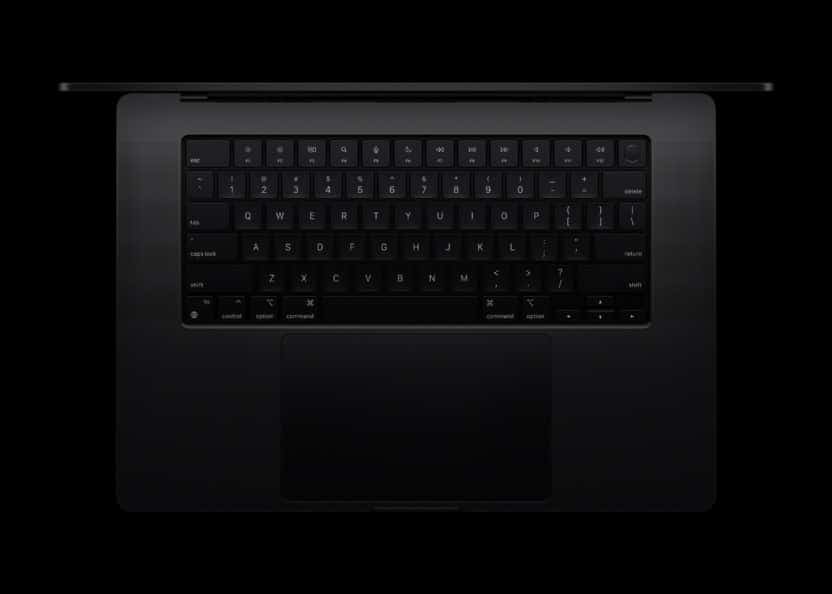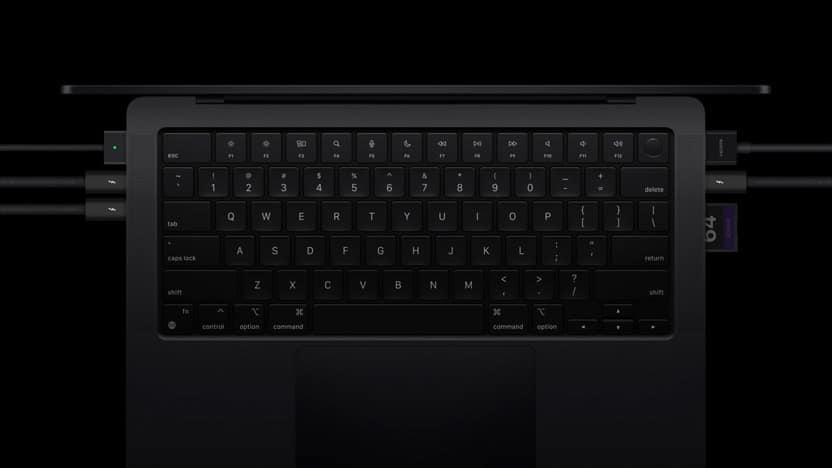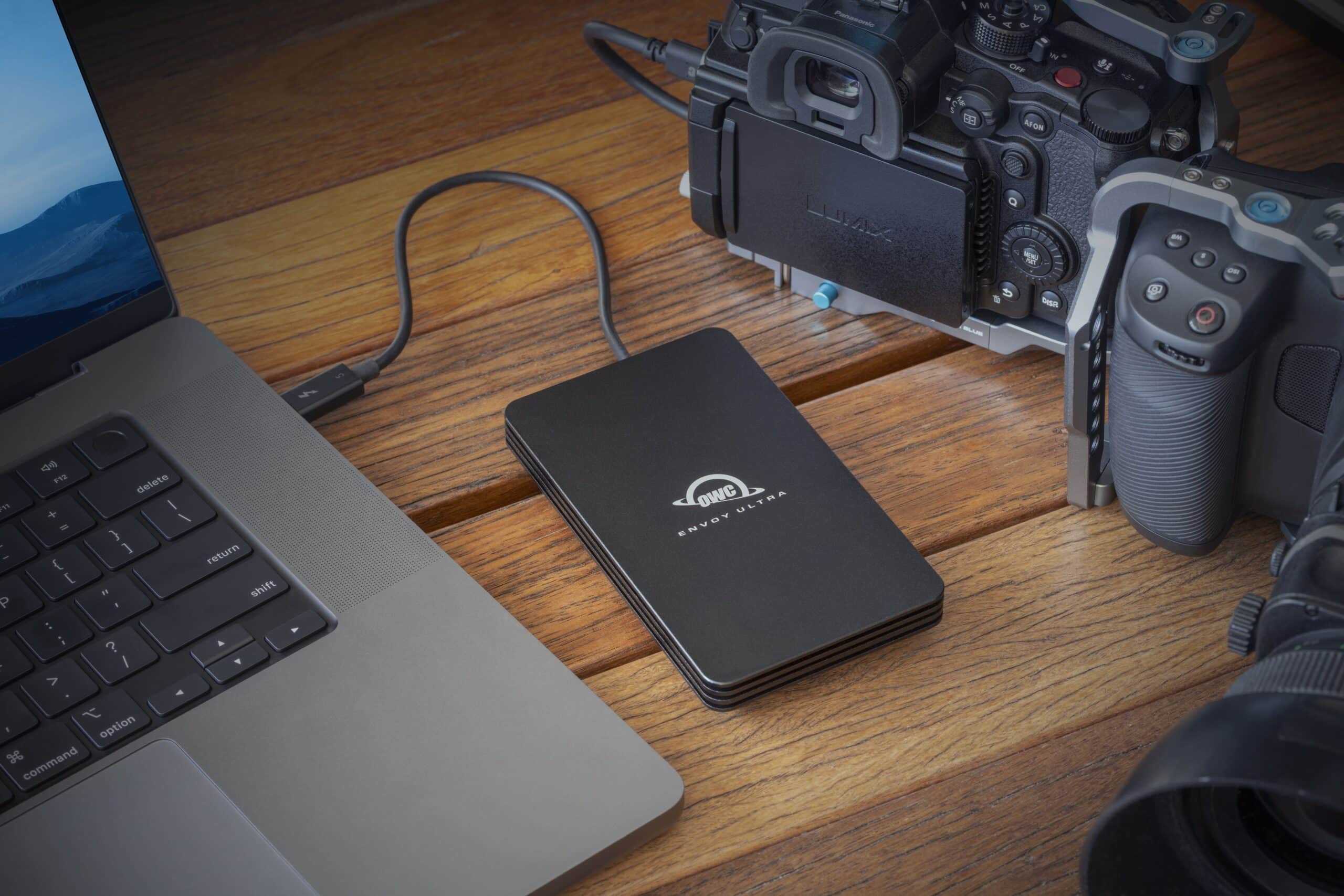
Rounding out Apple’s week of Mac updates was the unveiling of the company’s latest generation of the MacBook Pro. While there are no major design changes to discuss, these new models feature some significant performance and battery life increases alongside display and port enhancements that should make them particularly appealing for users with an M1 Pro or M1 Max MacBook Pro, not to mention those still using Intel-powered machines.
The biggest announcement of this launch was the addition of the new M4 Max chip to Apple’s M-Series family of chips. The base M4 chip is available inside the latest iPad Pros as well as in the new iMacs Apple announced Monday and the new Mac mini announced yesterday. The announcement of the Mac mini also included the new M4 Pro. The MacBook Pro lineup brings the new M4 Max but is the only product so far that will feature all three M4 chips. So, let’s break down the performance gains for MacBook Pro according to each chip.

14” M4 MacBook Pro
The only MacBook Pro that will offer the base M4 chip is the 14” model. That means if you want a 16” MacBook Pro you’ll need to pony up the extra cash for a model with either M4 Pro or M4 Max.
While the new iMacs are available with a binned, 8-core CPU, 8-core GPU version of the M4, both the base model Mac mini and this base model 14” MacBook Pro feature the non-binned, 10-core CPU, 10-core GPU configuration of the chip.
The 10-core CPU features four performance cores and six efficiently cores. That and the 10-core GPU amount to performance Apple says is 1.8x faster than the 13-inch MacBook Pro with M1 for tasks like editing high-resolution photos. Meanwhile, more complex tasks like rendering scenes in Blender are up to 3.4x faster than that base M1 model.
As Apple did with both the new iMac and Mac mini, the company has also increased the base amount of RAM in the 14” MacBook Pro from 8GB to 16GB with support for up to 32GB.
The port selection remains unchanged on this 14” base model with three Thunderbolt 4 ports, a MagSafe charging port, SD card slot, headphone jack, and an HDMI port.

M4 Pro MacBook Pro
Moving up to M4 Pro not only unlocks more performance, it unlocks that second 16” screen size. While the base M4 features a 10-core CPU and GPU, the M4 Pro increases CPU cores to 14 with 10 performance cores and four efficiency cores. The chip also increases GPU cores from 10 to 20, making the M4 Pro’s graphics twice as powerful as the base M4.
Another important update is to memory bandwidth. Apple has increased memory bandwidth by 75% over M3 Pro and Apple says the M4 Pro has double the memory bandwidth of any competing AI-focused chip for Windows PCs.
Apple says updates make the M4 MacBook Pros up to 3x faster than the M1 Pro MacBook Pro.

M4 Max MacBook Pro
As you can imagine, M4 Max ups the number of CPU and GPU cores even further.
M4 Max has a 16-core CPU and a 40-core GPU that doubles the graphics capabilities of the M4 Pro. The M4 Max also boasts 500GB per second of unified memory bandwidth and a Neural Engine that is more than 3x faster than M1 Max.
All told, the M4 Max unlocks performance that is 3.5x faster than the performance of the M1 Max MacBook Pro. The M4 Max MacBook Pro also supports up to 128GB of RAM. Meanwhile, the M4 Max Media Engine features two ProRes accelerators making intensive video editing workflows much faster.
Thunderbolt 5 Comes to M4 Pro and M4 Max MacBook Pro

While the base model M4 MacBook Pro and Mac mini still feature Thunderbolt 4 ports, when you upgrade the Mac mini or MacBook Pro to M4 Pro or the MacBook Pro to M4 Max, you also upgrade those three Thunderbolt ports to Thunderbolt 5.
Thunderbolt 5 is the latest generation of Intel’s Thunderbolt interface standard. Built atop the ubiquitous USB-C connector, Thunderbolt is the most versatile data port available, combining reliable data transfer speeds, incredible support for high-resolution displays, and pass through charging—all in one port. Apple has long been a major proponent of Thunderbolt, supporting the standard on the Mac since 2011, so it’s no surprise to see the latest Macs supporting Thunderbolt 5 which is the fastest and most versatile version of the standard yet.
You can read a more in-depth overview of how Thunderbolt 5 improves over the previous Thunderbolt 3 and Thunderbolt 4 generations here, but for the sake of brevity, Thunderbolt 5 doubles the amount of available, bi-directional bandwidth from the 40Gbps found on Thunderbolt 3 and 4 devices to 80Gbps. In other words, these are the fastest ports on the market.
But Thunderbolt 5 is not just about speed. While Thunderbolt 5 provides more headroom for data-hungry devices such as fast Thunderbolt drives, it also brings better support for high-resolution displays. In fact, Thunderbolt 5 will support DisplayPort 2.1 connectivity and will also allow for up to 120Gbps of uni-directional bandwidth. This flex from 80Gbps to 120Gbps of bandwidth is implemented when Thunderbolt 5 detects video-intensive usage.
The best Thunderbolt 5 drive for your new M4 Pro or M4 Max MacBook Pro

Though Thunderbolt 5 is nearly as new as these new MacBook Pros, here at OWC, we’ve already got you covered when it comes to the perfect external drive to pair with these new Macs.
We recently announced our very first Thunderbolt 5 drive: the OWC Envoy Ultra. This bus-powered external SSD is our fastest ever, capable of speeds over 6,000 MB/s and with capacities up to 4TB. With that kind of capability, Envoy Ultra can handle any professional grade-project you can throw at it, whether its editing 8K or 12K high-resolution, lossless video, or transferring large amounts of data in a flash.
Pre-orders for the OWC Envoy Ultra are open now and we’ll start shipping them very soon. That means when you get your new M4 Pro or M4 Max MacBook Pro with Thunderbolt 5, you’ll have the fastest external drive on the market to pair it with in Envoy Ultra. Check it out.
More Battery Life
Apple says thanks to each M4 chip’s excellent performance-per-watt, the new M4, M4 Pro, and M4 Max MacBook Pros can now achieve up to an impressive 24 hours of battery life. For those upgrading from an Intel Mac, Apple says this amounts to as much as 140% boost in battery life—from 10 hours to 24 hours.
Brighter display—now with Nano-Texture option

Each of the new MacBook Pro models feature improved Liquid XDR Displays. The MacBook Pro can now show SDR content at up to 1,000 nits while still displaying HDR content at up to 1,600 nits of peak brightness.
Like it does on the Studio Display, M4 iPad Pros, and the new M4 iMac, Apple is now offering its Nano-Texture display on each M4 MacBook Pros as well. This covers the MacBook Pro’s Liquid XDR Display with a nano-textured glass that is designed to reduce reflections and glare while maintaining image quality.
Upping SDR brightness to 1,000 nits and adding the Nano-Texture display option should be a huge upgrade to anyone who wants to work with their MacBook Pro outside or in bright rooms.
New 12MP Center Stage Camera
One final update to the M4 MacBook Pros is the inclusion of a new 12MP Center Stage camera. As a Center Stage camera, the new MacBook pros can track and keep you in the center of the frame during a video call. Plus Apple says the new camera delivers improved video quality in challenging lighting conditions.
The new camera also supports Desk View which allows you to switch from a view of your face to a view of your actual desktop.
M4 MacBook Pro pricing and availability
The M4 MacBook Pro starts at $1,599 for the 14” base model with the M4 chip. The M4 Pro models start at $1,999 and the M4 Max models start at $3,199. Pre-orders for the M4 MacBook Pros are open now and in-store availability will start next Friday, Nov. 8, 2024.










This is an exciting lineup of MacBook Pros, and Apple has definitely upped its game with the new M4 chips and Thunderbolt 5! The performance increases across the board are impressive, especially for creative professionals working with high-resolution video or complex 3D rendering. The fact that the M4 Max is 3.5x faster than the M1 Max is mind-blowing, and with 128GB of RAM support, it’s clear this is a machine built for heavy-duty tasks.
Thunderbolt 5 is a game-changer too—doubling bandwidth to 80Gbps is huge for anyone dealing with large files or running multiple displays. It’s also great to see that Apple is integrating DisplayPort 2.1 and supporting even higher-resolution workflows, like 8K and 12K video. The OWC Envoy Ultra SSD sounds like the perfect companion for these new MacBook Pros, offering blazing-fast speeds to match the new connectivity.
And let’s not forget the battery life—24 hours is a massive jump, and for those upgrading from Intel-powered machines, that’s a seriously welcome improvement. The new 12MP Center Stage camera and Nano-Texture display are great additions for those working in different environments, whether you’re video conferencing or editing in bright rooms.
Overall, Apple seems to have really nailed the balance between raw power, battery life, and usability with this release. For anyone still using an older Intel Mac or even an M1-based MacBook Pro, the M4 series looks like a serious upgrade. Can’t wait to see how these perform in real-world use!